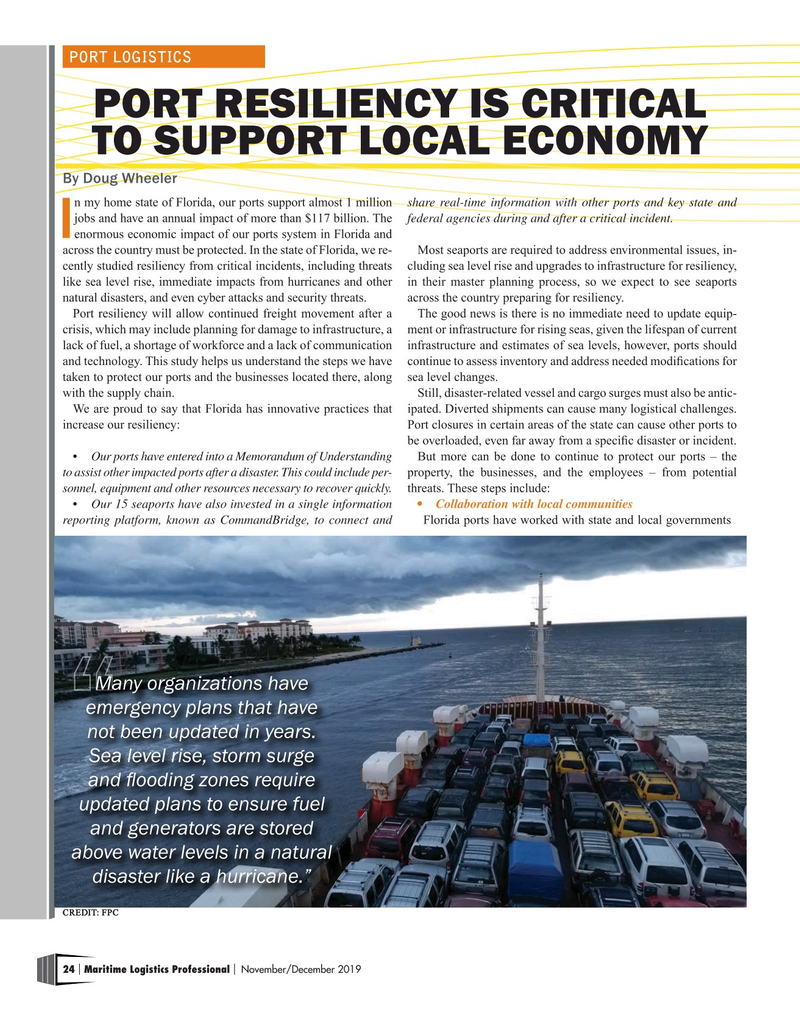
Page 24: of Maritime Logistics Professional Magazine (Nov/Dec 2019)
Short Sea Shipping Ports
Read this page in Pdf, Flash or Html5 edition of Nov/Dec 2019 Maritime Logistics Professional Magazine
PORT LOGISTICS
PORT RESILIENCY IS CRITICAL
TO SUPPORT LOCAL ECONOMY
By Doug Wheeler n my home state of Florida, our ports support almost 1 million share r eal-time information with other ports and key state and jobs and have an annual impact of more than $117 billion. The federal agencies during and after a critical incident.
Ienormous economic impact of our ports system in Florida and across the country must be protected. In the state of Florida, we re- Most seaports are required to address environmental issues, in- cently studied resiliency from critical incidents, including threats cluding sea level rise and upgrades to infrastructure for resiliency, like sea level rise, immediate impacts from hurricanes and other in their master planning process, so we expect to see seaports natural disasters, and even cyber attacks and security threats. across the country preparing for resiliency.
Port resiliency will allow continued freight movement after a The good news is there is no immediate need to update equip- crisis, which may include planning for damage to infrastructure, a ment or infrastructure for rising seas, given the lifespan of current lack of fuel, a shortage of workforce and a lack of communication infrastructure and estimates of sea levels, however, ports should and technology. This study helps us understand the steps we have continue to assess inventory and address needed modifcations for taken to protect our ports and the businesses located there, along sea level changes.
with the supply chain. Still, disaster-related vessel and cargo surges must also be antic-
We are proud to say that Florida has innovative practices that ipated. Diverted shipments can cause many logistical challenges. increase our resiliency: Port closures in certain areas of the state can cause other ports to be overloaded, even far away from a specifc disaster or incident. • Our ports have entered into a Memorandum of Understanding But more can be done to continue to protect our ports – the to assist other impacted ports after a disaster. This could include per- property, the businesses, and the employees – from potential sonnel, equipment and other resources necessary to recover quickly. threats. These steps include: • Our 15 seaports have also invested in a single information • Collaboration with local communities reporting platform, known as CommandBridge, to connect and Florida ports have worked with state and local governments
Many organizations have emergency plans that have not been updated in years.
Sea level rise, storm surge and fooding zones require updated plans to ensure fuel and generators are stored above water levels in a natural disaster like a hurricane.”
CREDIT: FPC 24 Maritime Logistics Professional November/December 2019 | |

 23
23

 25
25
